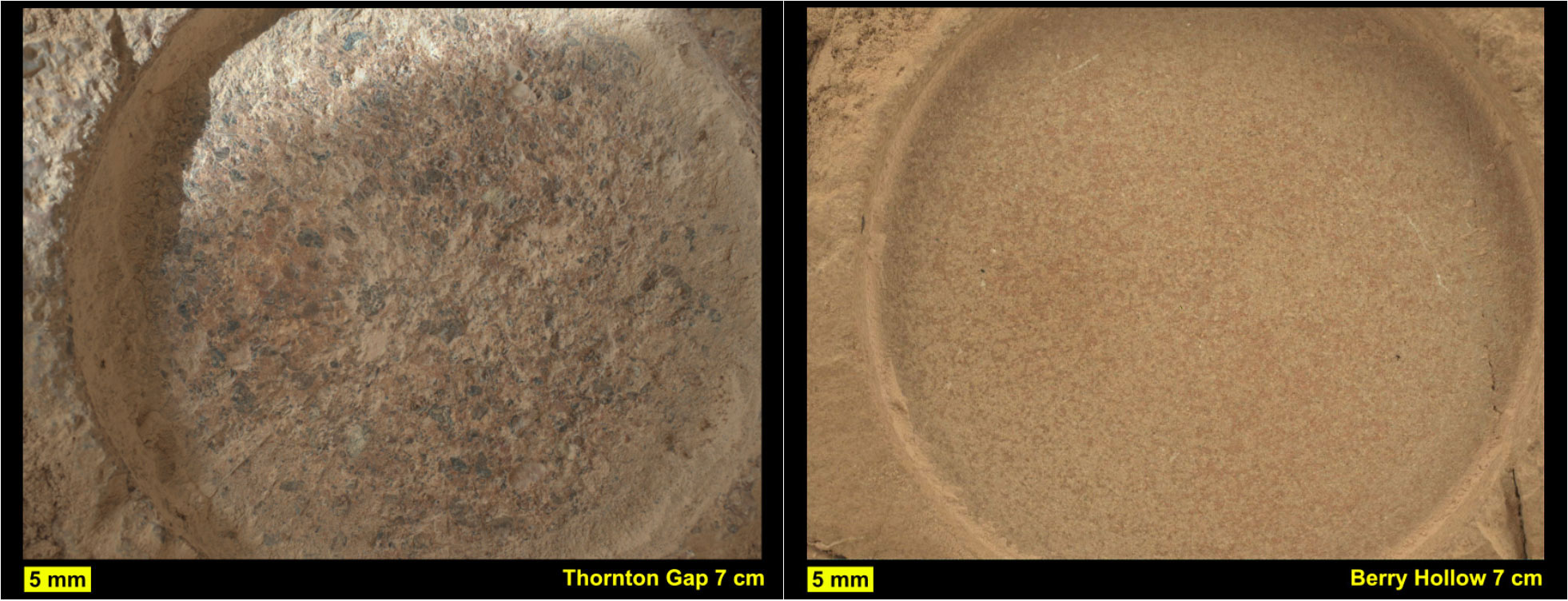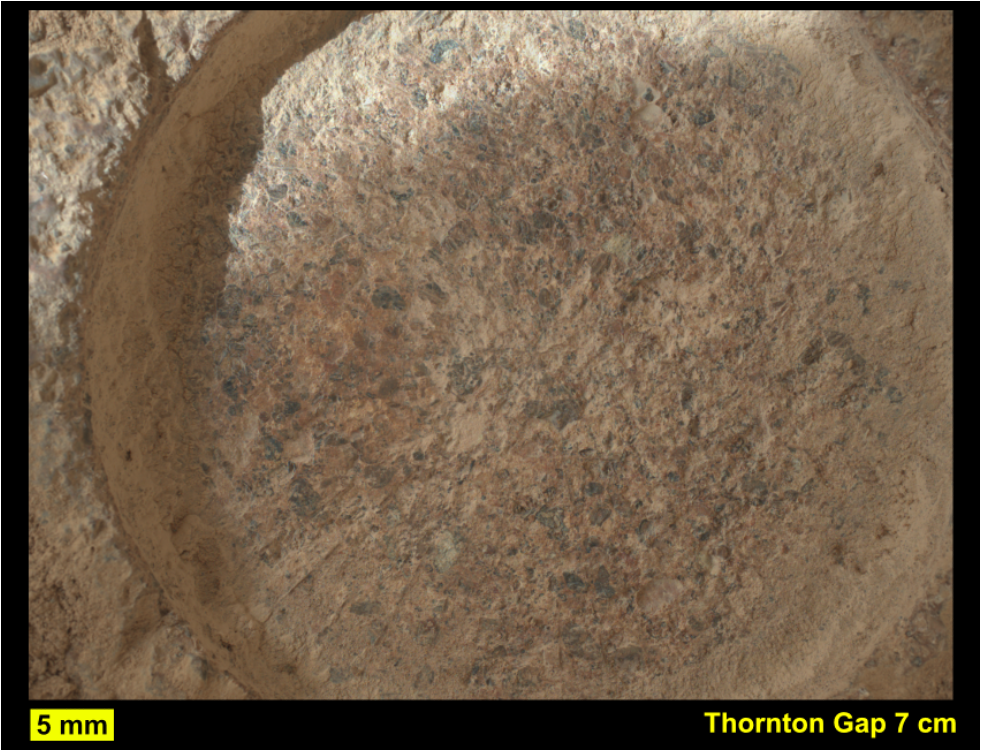Two Abrasion Patches From Perseverance at Jezero Delta

| Credit | NASA/JPL-Caltech/MSSS |
|---|---|
| Language |
|
This pair of images from NASA’s Perseverance shows close-up views of two rock types the rover investigated in the delta area of Mars’ Jezero Crater, which scientists consider one of the best places on the Red Planet to search for potential signs of ancient microbial life. The image on the left shows a circular patch Perseverance abraded on a rocky outcrop called “Skinner Ridge,” while the image on the right shows an abrasion patch on a rocky outcrop called “Wildcat Ridge.” Under each image is the abrasion patch’s name the mission team has provided them for identification purposes.
Perseverance grinds circular patches into rocks so its science instruments can analyze the rocks’ composition. The images were taken by the WATSON (Wide Angle Topographic Sensor for Operations and eNgineering) camera on the SHERLOC (Scanning Habitable Environments with Raman & Luminescence for Organics & Chemicals) instrument on June 29 and July 21, 2022, the 482nd and 504th Martian days, or sols, of the mission. The camera that took these images, located at the end of Perseverance’s robotic arm, was about 3 inches (7 centimeters) away from each rock surface.
The Skinner Ridge rock is sandstone and composed of much larger grains than the Wildcat Ridge rock. The rock and mineral fragments at Skinner Ridge – which are the detritus of larger rocks – have a diversity of compositions and were transported by water from possibly hundreds of miles outside of Jezero Crater. The Wildcat Ridge rock is a more finely grained sedimentary rock, a sulfate-bearing mudstone. It has a more homogeneous composition than Skinner Ridge and appears to have formed in saltwater in the distant past, possibly as ancient lake water evaporated.
Scientists believe both rocks formed in, and preserve information about, potentially habitable environments in Mars’ ancient past. The verification of ancient life on the Red Planet carries an enormous burden of proof.
A key objective for Perseverance’s mission on Mars is astrobiology, including the search for signs of ancient microbial life. The rover will characterize the planet’s geology and past climate, pave the way for human exploration of the Red Planet, and be the first mission to collect and cache Martian rock and regolith (broken rock and dust).
Subsequent NASA missions, in cooperation with ESA (European Space Agency), would send spacecraft to Mars to collect Perseverance’s sealed samples from the surface and return them to Earth for in-depth analysis.
The Mars 2020 Perseverance mission is part of NASA’s Moon to Mars exploration approach, which includes Artemis missions to the Moon that will help prepare for human exploration of the Red Planet.
NASA’s Jet Propulsion Laboratory, which is managed for the agency by Caltech in Pasadena, California, built and manages operations of the Perseverance rover. WATSON was built by Malin Space Science Systems (MSSS) in San Diego and is operated jointly by MSSS and JPL.
For more about Perseverance: mars.nasa.gov/mars2020/
For more about the Mars Sample Return campaign: mars.nasa.gov/msr


